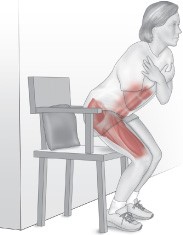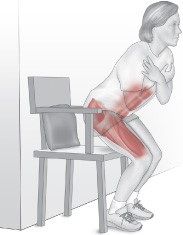
Why Functional Exercise?
You’ve been working out at the gym for the last few months getting ready for your vacation. You have a great routine of using the machines to target all of your muscles. But today you lift a 50-pound suitcase to carry it downstairs — and throw your back out. What happened? In all likelihood, you’re not paying enough attention to your functional fitness. You might be toned, tight, and ready for the beach, but are you ready to lift your toddler out of his car seat or hoist the spring-water bottle onto the dispenser?
Functional fitness and functional exercise may be your answer. They focus on building a body capable of doing real-life activities in real-life positions, not just lifting a certain amount of weight in an idealized posture created by a gym machine.
Functional training originated as a form of injury rehabilitation with exercises that are relevant to the movements of everyday life. The key to functional exercise is integration. It’s about teaching all the muscles to work together rather than isolating them to work independently.
Traditional weight training, often using machines, only works one muscle group at a time which is contradictory to the normal coordinated effort used to complete most activities. This type of training is more likely to lead to overuse injuries, muscular imbalances and can also limit movement as well as strength gains.
Functional Training Key Components and Benefits
Uses muscles simultaneously
Requires muscles to work to stabilize yourself
Often uses all three planes of motion
Mimics movement of everyday life
Engages core muscles
Allows for maximum strength capacity
Improves posture and body position
Requires complete activation of muscles
Gives more natural looking muscles
Helps prevent injuries
Uses purposeful movement patterns
Lengthens muscle tissue
We recommend getting started with functional fitness by controlling your own body weight and balance. For example let’s take a simple but challenging exercise, start in a sitting position with your arms crossed over your chest. Hinge from the hip keeping your back straight and push through your legs to stand up keeping your weight more on the heels than your toes. Stand up using your hands as little as possible or not at all. As you bend slightly forward to stand up, keep your back and shoulders straight. Then slowly sit back down, again keeping your back straight and hinging from the hip, taking at least three seconds to move. 
Unlike traditional weightlifting on machines, with functional exercise, if you ‘train to failure’ [until muscle fatigue], you train to fail. Instead, your set ends when you can no longer perform the exercise with perfect form.
If you would like to discuss a functional training program, call one of our offices to schedule a free consultation.
photo courtesy of www.health.harvard.edu






